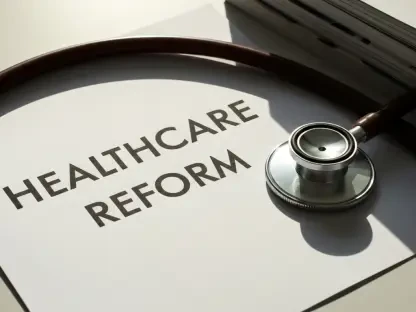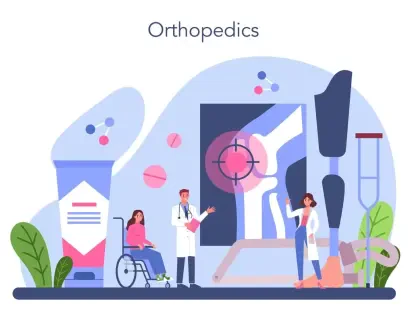The recent strategic decision to significantly reduce funding for U.S. health and research endeavors threatens to impede progress in these sectors. At the core of this fiscal strategy is a drastic reduction in resources allocated to pivotal healthcare institutions and scientific research bodies, sparking debate about the long-term implications for public well-being, medical innovation, and economic stability.
Overview of the U.S. Health and Research Landscape
The United States stands as a global leader in healthcare innovation and research, with a landscape enriched by significant contributions from both public and private sectors. Crucial to this ecosystem are institutions like the National Institutes of Health and private pharmaceutical companies, supported by comprehensive policies sustaining research and public health advancements. The interplay between these entities ensures continual medical breakthroughs and robust healthcare delivery systems that cater to a diverse population.
Initiatives across various sectors drive research that leads to groundbreaking medical discoveries, enabling better disease management and treatment development. Policies underpinning these efforts are designed to bolster scientific inquiry and ensure that significant health challenges—such as chronic diseases and emerging pandemics—are adequately addressed. The health and research sectors not only aim to promote public welfare but also represent vital components of the nation’s economic engine.
Impact of Trump’s Budget Cuts
Affected Areas and Programs
The administration’s budget reductions have severely impacted several critical areas, notably the funding of the National Institutes of Health. A substantial cut of $2.3 billion in grant funding has resulted in the termination of research efforts addressing issues like vaccine hesitancy and HIV/AIDS. Consequently, there is a tangible threat to ongoing research in essential fields, including pediatric cancer and chronic illnesses like diabetes, stifling medical innovation.
These budget cuts also extend to public health programs and Medicaid, raising concerns about the ability of these programs to maintain their effectiveness. Reductions in funding for centers like the Centers for Disease Control and Prevention undermine initiatives to enhance public health infrastructure and preparedness. This shift significantly weakens the national response to health crises, affecting millions who depend on Medicaid for access to essential healthcare services.
Data and Projections
Emerging reports indicate a notable decrease in research outputs and development within health sectors, predicting slower growth trajectories due to diminished funding. Industry experts caution that the lack of investment could impede scientific advancement and economic growth, drawing parallels with the aftermath of the Great Recession. Projections suggest that reduced investment could lead to a decline in the U.S.’s global standing in research and innovation, with long-term repercussions on public health preparedness.
These data points highlight the growing need for detailed analysis and strategic planning to counterbalance the negative effects of these cuts. Policymakers and industry leaders must navigate the shifting landscape and mitigate the potential fallout from fiscal austerity measures affecting critical health and research domains.
Challenges Facing U.S. Health and Research
The repercussions of budget cuts have introduced a host of challenges that are regulatory, technological, and market-driven. Technologically, the potential stagnation in research exacerbates the hurdles in developing cutting-edge treatments and maintaining leadership in medical innovation. Regulatory challenges include the adaptation of policies that facilitate continued progress amid financial constraints, compelling stakeholders to innovate within limited resources.
From a market perspective, there is a heightened risk of stunted opportunities for groundbreaking research, particularly within university and public health contexts. This leads institutions to reassess funding allocations and prioritize initiatives that can sustain through external financial pressures. Potential solutions lie in fostering partnerships and alternative funding mechanisms that can alleviate the burden on institutions most affected by fiscal cutbacks.
Regulatory Landscape and Changes
Budget cuts have necessitated shifts in the regulatory landscape impacting health and research arenas. Agencies and institutions are forced to adapt to new compliance measures that accompany dwindling funds, affecting the scope and efficacy of ongoing projects. The introduction of economically inclined regulatory changes further complicates compliance, posing significant implications for research capabilities.
This evolving regulatory framework calls for meticulous planning to navigate compliance complexities while ensuring that crucial research efforts proceed uninterrupted. Stakeholders must engage with policymakers to advocate for regulatory adjustments that maintain alignment with the overarching goals of health and research progression.
Future Trajectory of U.S. Health and Research
Looking ahead, the budgetary constraints imposed pose significant questions regarding the future direction of U.S. health and research sectors. Despite the challenges, potential exists for growth areas driven by technological advancements and a reevaluation of funding channels. Emerging technologies such as artificial intelligence and genomic research continue to offer pathways for innovation despite fiscal hurdles.
Industry disruptors may arise from changes in market dynamics, leading institutions to explore innovative funding models and strategic alliances. These partnerships could present opportunities to foster resilience against fiscal setbacks while sustaining initiatives necessary for future healthcare breakthroughs and public health advancements.
Conclusion and Recommendations
The comprehensive analysis of the impacts of Trump-era budget cuts reveals deep concerns regarding the future of the U.S. health and research sectors. It highlights the need for strategic adaptation to safeguard against ongoing challenges. Recommending increased focus on alternative funding avenues and stronger policy support is crucial to maintaining momentum in medical research and healthcare innovation. Encouraging collaborations between public and private entities can create resilient frameworks that preserve essential research and public health functions in the face of financial adversity.









